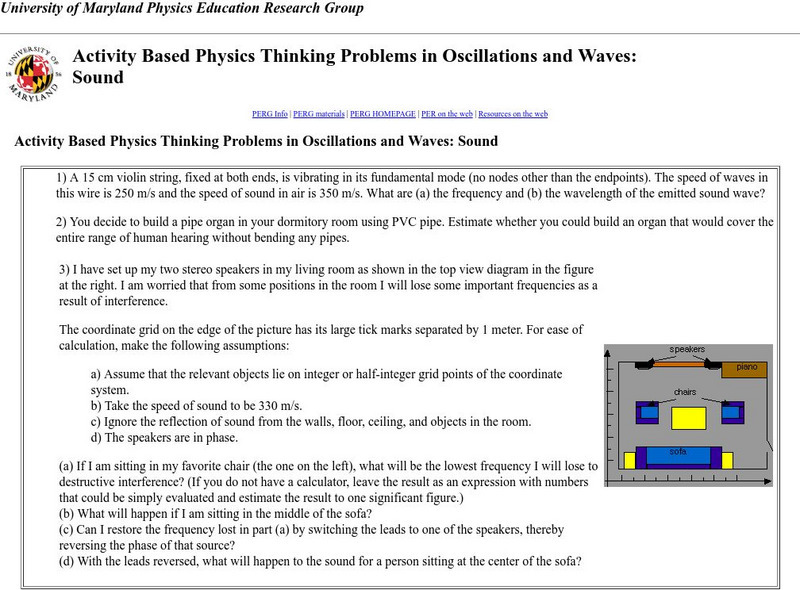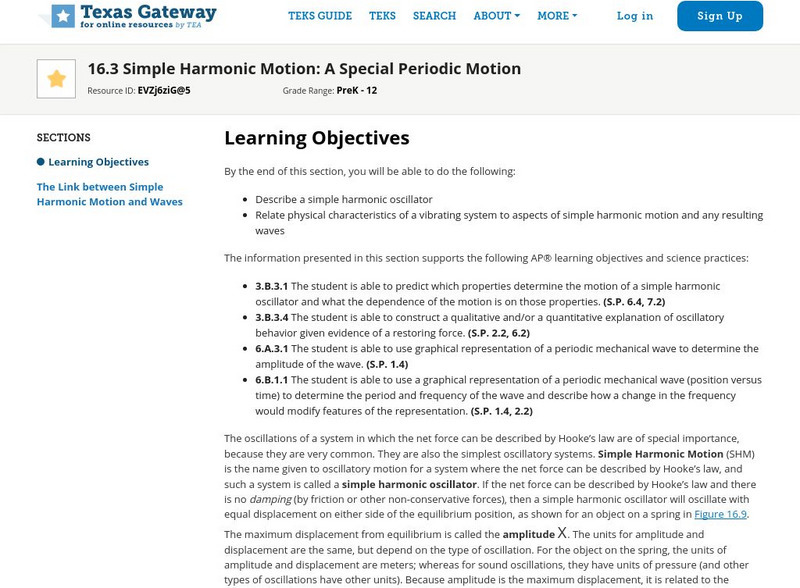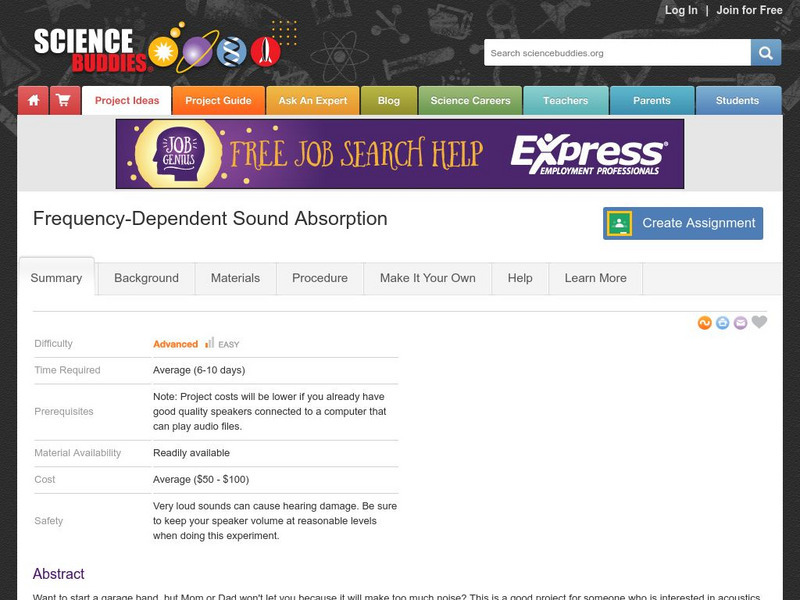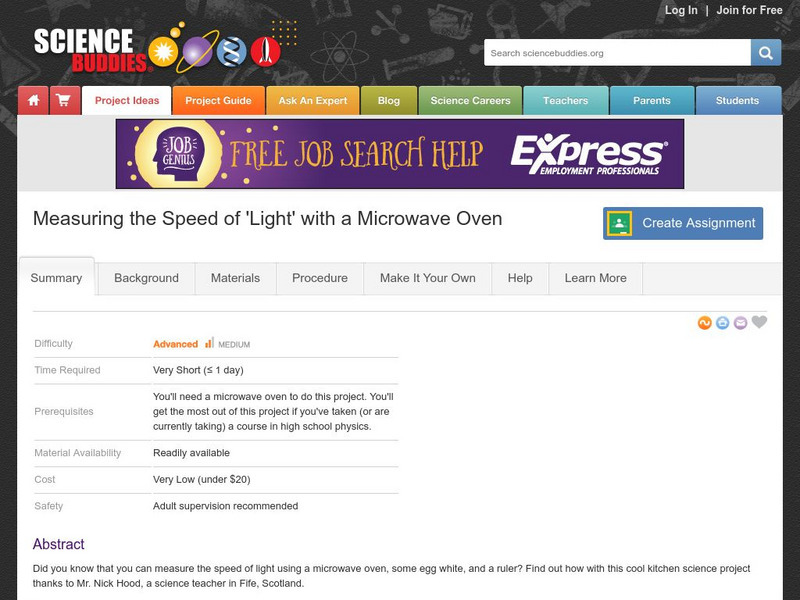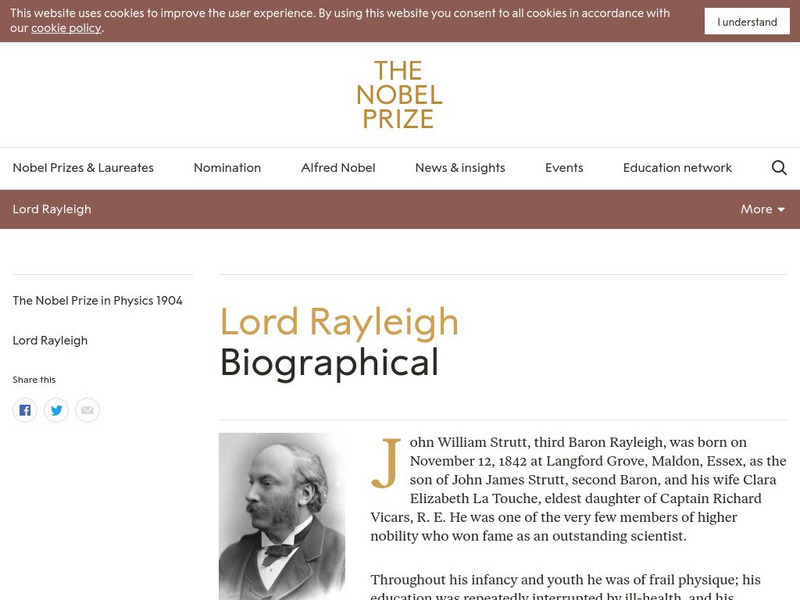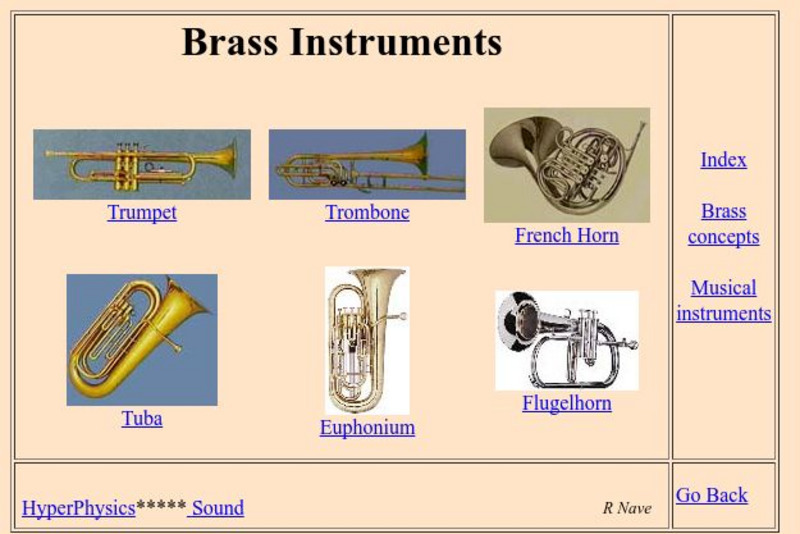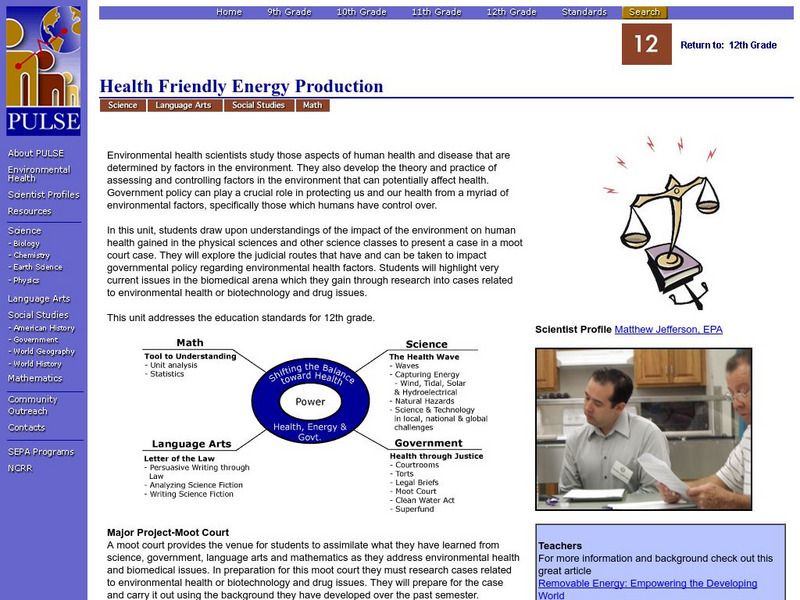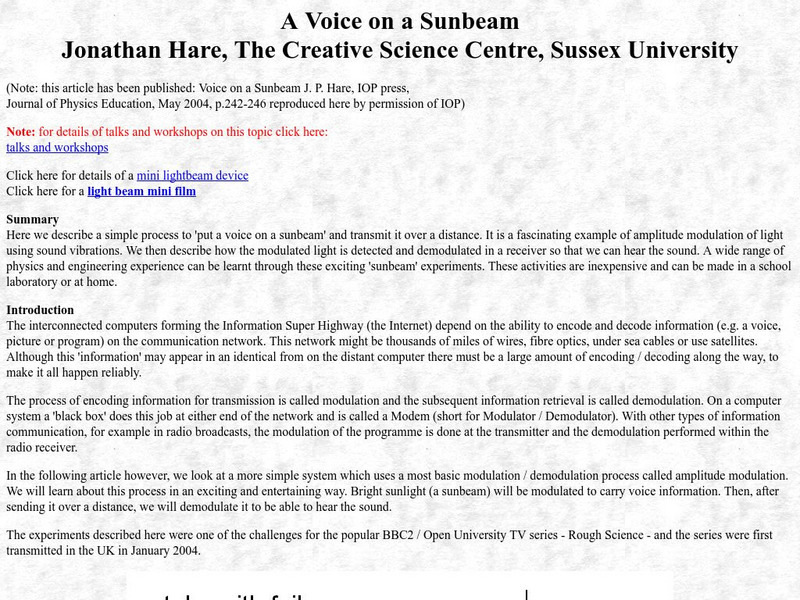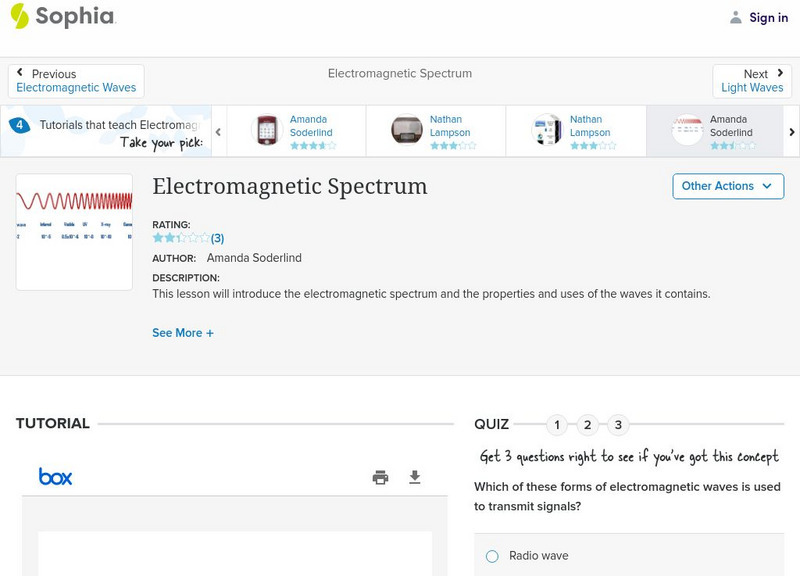Libre Text
Libre Texts: Physics: Electron in a Box
What happens when an electron is trapped in a one-dimensional box? Take a look at these theories and equations applied to examples which can be illustrated this way.
University of Maryland
University of Maryland: Thinking Problems With Sound
A series of thought-provoking multiple-choice questions from the University of Maryland on the topic of sound and acoustics. One question pertains to the acoustics of a furnished room with two speakers; demands a basic understanding of...
Science Education Resource Center at Carleton College
Serc: Using Ph Et Simulations in a Large Lecture Class the Photoelectric Effect
This activity provides a complete curriculum for teaching the photoelectric effect using the PhET Photoelectric Effect simulation in a large-lecture modern physics course.
Texas Education Agency
Texas Gateway: Simple Harmonic Motion: A Special Periodic Motion
By the end of this section, you will be able to describe a simple harmonic oscillator and relate physical characteristics of a vibrating system to aspects of simple harmonic motion and any resulting waves.
Georgia Department of Education
Ga Virtual Learning: Sound
Through multiple animations and interactive activities, this module allows students to investigate the properties of sound.
Science Buddies
Science Buddies: Frequency Dependent Sound Absorption
Want to start a garage band, but Mom or Dad won't let you because it will make too much noise? This is a good project for someone who is interested in acoustics and likes to build things. The objective of this project is to determine if...
Science Buddies
Science Buddies: Extreme Sounds: Lessons in a Noisy World
Just how loud does a sound have to be for us to hear it? And how loud is too loud for our ears? Learn to measure levels of sound in this project, and discover the amazing auditory range your ears can detect in the noisy world around you.
Science Buddies
Science Buddies: Measuring the Speed of 'Light' With a Microwave Oven
In this experiment, you will measure the speed of light using a microwave oven, some egg white, and a ruler. This short project proves to be an extremely interesting choice for a science lab, with pictures for illustration, and thorough...
Nobel Media AB
The Nobel Prize: Otto Stern Biographical
This is a brief biography on the life and scientific work of Otto Stern, a physicist honored with the Nobel Prize in physics for his "development of the molecular ray method and his discovery of the magnetic moment of the proton."
Nobel Media AB
The Nobel Prize: Lord Rayleigh Biographical
At this site from the Nobel e-Museum, you can read about the scientific work of Lord Rayleigh (1842-1919 CE). This article includes information on his education and experiments with light and sound waves.
Physics Central
Physics Central: Physics in the Snow: Snowy Colors
A simple experiment through which students observe the connection between color and heat and prove that dark-colored objects and light-colored objects heat at different rates, even when exposed to the same heat or light source.
Georgia State University
Georgia State University: Hyper Physics: Color
This site from Georgia State University discusses the location of visible light on the electromagnetic spectrum. Includes the wavelength values for various colors of light within the visible light spectrum.
Georgia State University
Georgia State University: Hyper Physics: Brass Instruments
Understand the science of sound when performing with a brass instrument such as a trumpet or a trombone.
CK-12 Foundation
Ck 12: Physical Science: Gamma Decay
[Free Registration/Login may be required to access all resource tools.] Explains how and why gamma decay occurs, what gamma rays are, and why gamma radiation is the most harmful.
Curated OER
Merriam Webster: Visual Dictionary Online: Wave
Labeled diagram showing the main components of a wave.
Science Buddies
Science Buddies: Guitar Fundamentals: Wavelength, Frequency, & Speed
This is a rockin' project for guitarists with an interest in the physics behind music. If you have ever wondered why the pitch of the note changes when you fret the string, this project will help you understand by applying basic...
University of Arizona
Pulse: Health Friendly Energy Production
A cross curricular project where students conduct a moot court to explore the role government policy plays in protecting our health. The focus of the unit is how our power effects our environmental health. Students use their knowledge of...
PBS
Pbs Learning Media: Einstein: How Smart Was He?
This essay from the NOVA Web site explores the impact Einstein made on physics and most everything we know about the cosmos.
Science Education Resource Center at Carleton College
Serc: Ocean World
A link to a website with information about the ocean. Learn about ocean processes, oceanography, physical oceanography, and get real-time ocean data. Site contains college-level and beyond textbook as well as teaching materials.
Creative Science Centre
Creative Science Centre: A Voice on a Sunbeam
Here is described a simple process to 'put a voice on a sunbeam' and transmit it over a distance. It is a fascinating example of amplitude modulation of light using sound vibrations. It then describes how the modulated light is detected...
PBS
Pbs Teachers: Science of Tsunamis: Seeking Understanding in the Wake of Tragedy
Conduct a demonstration to learn about how waves function in water. Create a poster that shows the physics of waves, how tsunamis work, the devastation caused by the 2004 tsunami or information about relief efforts for the 2004 tsunami.
Sophia Learning
Sophia: Electromagnetic Spectrum: Lesson 2
This lesson will introduce the electromagnetic spectrum and the properties and uses of the waves it contains. It is 2 of 4 in the series titled "Electromagnetic Spectrum."
Sophia Learning
Sophia: Electromagnetic Spectrum: Lesson 3
This lesson will introduce the electromagnetic spectrum and the properties and uses of the waves it contains. It is 3 of 4 in the series titled "Electromagnetic Spectrum."
Sophia Learning
Sophia: Electromagnetic Spectrum: Lesson 4
This lesson will introduce the electromagnetic spectrum and the properties and uses of the waves it contains. It is 4 of 4 in the series titled "Electromagnetic Spectrum."
Other popular searches
- Waves Physics Tsunami
- Physics Sound Waves
- Sound Waves Physics
- Energy Waves Physics
- Waves Physics High School
- Waves Physics Radio Waves
- Inquiry Based Physics Waves
- Waves Physics Practical
- Physics Waves
- Latitudinal Waves Physics
- Waves Physics Pictures
- Waves Physics Worksheets



